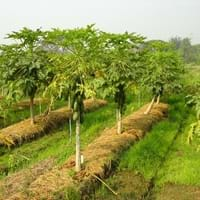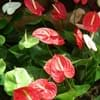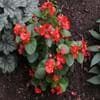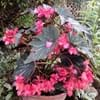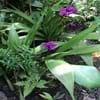Life Span
Annual
Annual and Perennial
Type
Tender Perennial
Fruit
Origin
Hybrid origin
Mexico, Central America
Types
Epiphytes
Male Papaya Tree, Female Papaya Tree, hermaphrodite Tree
Habitat
Rainforest
tropical environments, Tropical regions
USDA Hardiness Zone
11-15
10-15
Sunset Zone
H1, H2
H1, H2, 21, 23, 24
Habit
Clump-Forming
Upright/Erect
Flower Color
White, Pink
Ivory
Flower Color Modifier
Bicolor
Bicolor
Fruit Color
Not Available
Green, Orange, Light Yellow
Leaf Color in Spring
Green
Dark Green
Leaf Color in Summer
Green
Dark Green
Leaf Color in Fall
Green
Dark Green
Leaf Color in Winter
Green
Light Green
Leaf Shape
Arrowhead
Irregular
Plant Season
Spring, Summer, Fall, Winter
Spring, Summer, Fall, Winter
Sunlight
Full Sun, Partial Sun, Partial shade
Full Sun, Partial Sun, Partial shade
Growth Rate
Not Available
Very Fast
Type of Soil
Loam, Sand
Loam, Sand, Well drained
The pH of Soil
Acidic, Neutral, Alkaline
Acidic, Neutral
Soil Drainage
Well drained
Well drained
Bloom Time
Indeterminate
Indeterminate
Tolerances
Drought
Drought
Where to Plant?
Ground, Pot
Ground
How to Plant?
Divison, Seedlings
Seedlings
Plant Maintenance
Medium
Medium
Watering Requirements
Medium
Average Water Needs, Do Not over Water, Do not water frequently, Requires watering in the growing season
In Summer
Lots of watering
Lots of watering
In Spring
Moderate
Moderate
In Winter
Average Water
Average Water
Soil pH
Acidic, Neutral, Alkaline
Acidic, Neutral
Soil Type
Loam, Sand
Loam, Sand
Soil Drainage Capacity
Well drained
Well drained
Sun Exposure
Full Sun, Partial Sun, Partial shade
Full Sun, Partial Sun, Partial shade
Pruning
Remove damaged leaves, Remove dead branches, Remove dead leaves
Remove damaged leaves, Remove dead branches, Remove dead leaves, Remove shoots, Remove short branches, Remove short twigs, Requires little pruning
Fertilizers
All-Purpose Liquid Fertilizer
14-14-14 Fertilizer
Pests and Diseases
Red blotch
Red blotch
Plant Tolerance
Drought
Drought
Flower Petal Number
Not Available
Single
Foliage Texture
Bold
Bold
Foliage Sheen
Glossy
Glossy
Attracts
Not Available
Ants, Bees, Hummingbirds
Allergy
Not Available
Asthma, breathing problems, Itchiness, Itchy eyes, Red eyes, Runny nose, sneezing, Sore eyes, Swelling, Watery eyes, wheezing
Aesthetic Uses
Showy Purposes
Not Used For Aesthetic Purpose
Beauty Benefits
Not Available
Good for skin, Good for skin and hair, Improve hair condition, Making cosmetics, Not Available
Environmental Uses
Air purification
Air purification
Medicinal Uses
Muscle Pain, Rheumatism
Asthma, Bone strength, Cancer, Diabetes, Digestion problems, Heart problems, Inflammation, Skin Disorders
Part of Plant Used
Flowers, Leaves
Fruits, Seeds
Other Uses
Showy Purposes
Cosmetics, Making Shampoo, Used As Food, Used for its medicinal properties
Used As Indoor Plant
Yes
No
Used As Outdoor Plant
Yes
Yes
Garden Design
Bedding Plant, Container, Cutflower, Houseplant, Tropical
Container, Edible, Feature Plant, Fruit / Fruit Tree, Tropical
Botanical Name
ANTHURIUM(WHITE HEART) PPAF
CARICA papaya
Common Name
Anthurium
Papaya
In German
Anthurium
Papaya
In French
Anthurium
Papaye
In Spanish
Anthurium
Papaya
In Greek
ανθούρια
Παπάγια
In Portuguese
Anthurium
Mamão
In Polish
anturium
Papaja
In Latin
Anthurium
Papaya
Phylum
Magnoliophyta
Magnoliophyta
Class
Liliopsida
Magnoliopsida
Order
Alismatales
Brassicales
Family
Araceae
Caricaceae
Clade
Angiosperms, Monocots
Angiosperms, Eudicots, Rosids
Tribe
Anthurieae
Not Available
Subfamily
Not Available
Not Available
Number of Species
Not Available
Season and Care of Anthurium and Papaya
Season and care of Anthurium and Papaya is important to know. While considering everything about Anthurium and Papaya Care, growing season is an essential factor. Anthurium season is Spring, Summer, Fall and Winter and Papaya season is Spring, Summer, Fall and Winter. The type of soil for Anthurium is Loam, Sand and for Papaya is Loam, Sand, Well drained while the PH of soil for Anthurium is Acidic, Neutral, Alkaline and for Papaya is Acidic, Neutral.
Anthurium and Papaya Physical Information
Anthurium and Papaya physical information is very important for comparison. Anthurium height is 30.50 cm and width 30.00 cm whereas Papaya height is 457.20 cm and width 7.62 cm. The color specification of Anthurium and Papaya are as follows:
Anthurium flower color: White and Pink
Anthurium leaf color: Green
Papaya flower color: Ivory
- Papaya leaf color: Dark Green
Care of Anthurium and Papaya
Care of Anthurium and Papaya include pruning, fertilizers, watering etc. Anthurium pruning is done Remove damaged leaves, Remove dead branches and Remove dead leaves and Papaya pruning is done Remove damaged leaves, Remove dead branches, Remove dead leaves, Remove shoots, Remove short branches, Remove short twigs and Requires little pruning. In summer Anthurium needs Lots of watering and in winter, it needs Average Water. Whereas, in summer Papaya needs Lots of watering and in winter, it needs Average Water.

